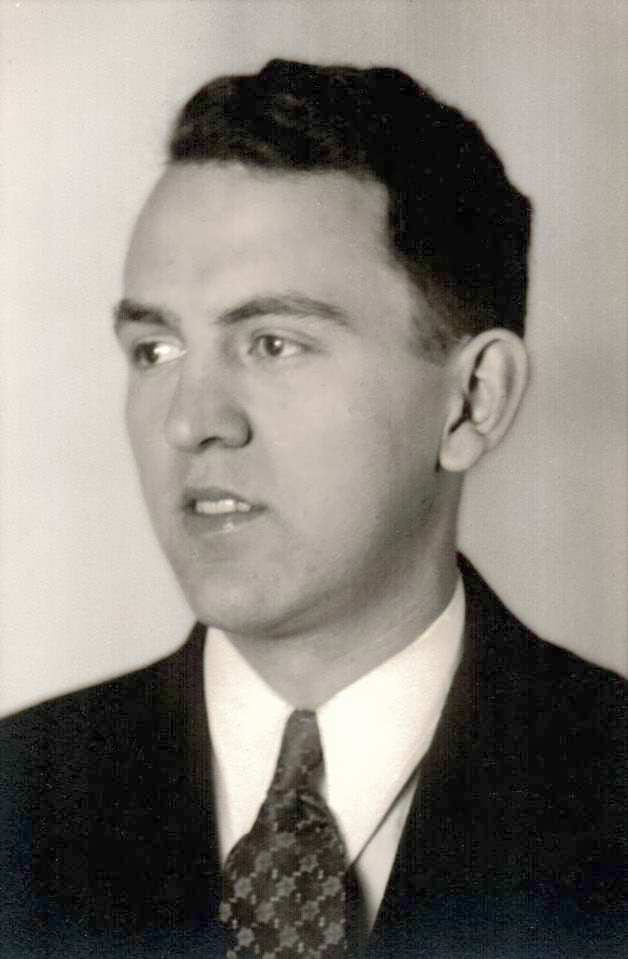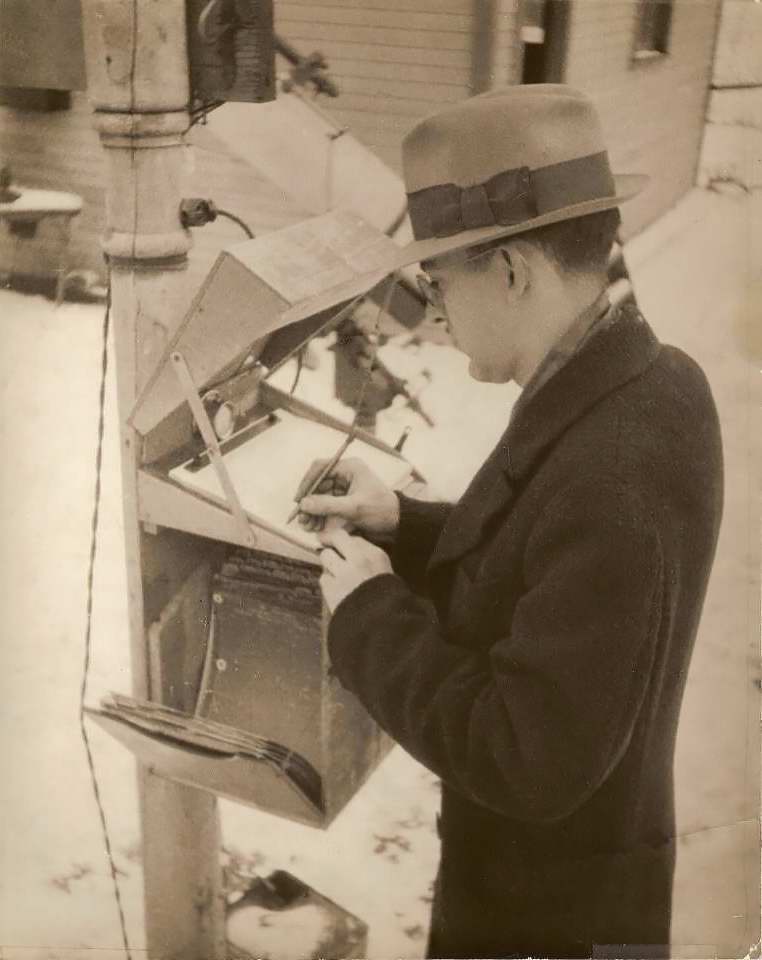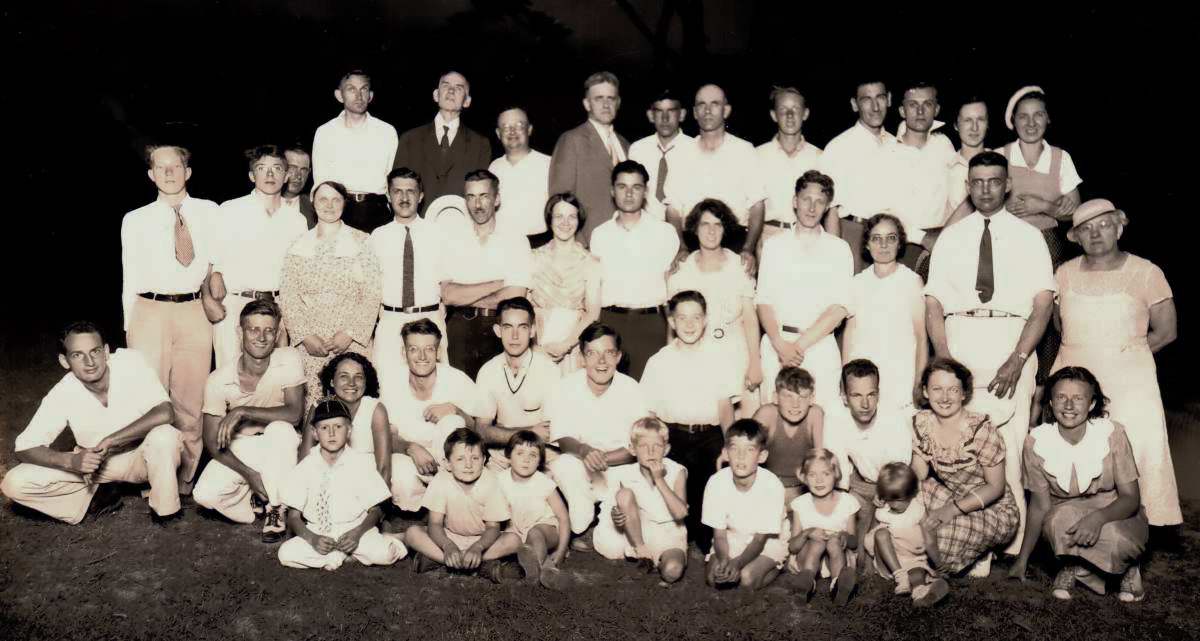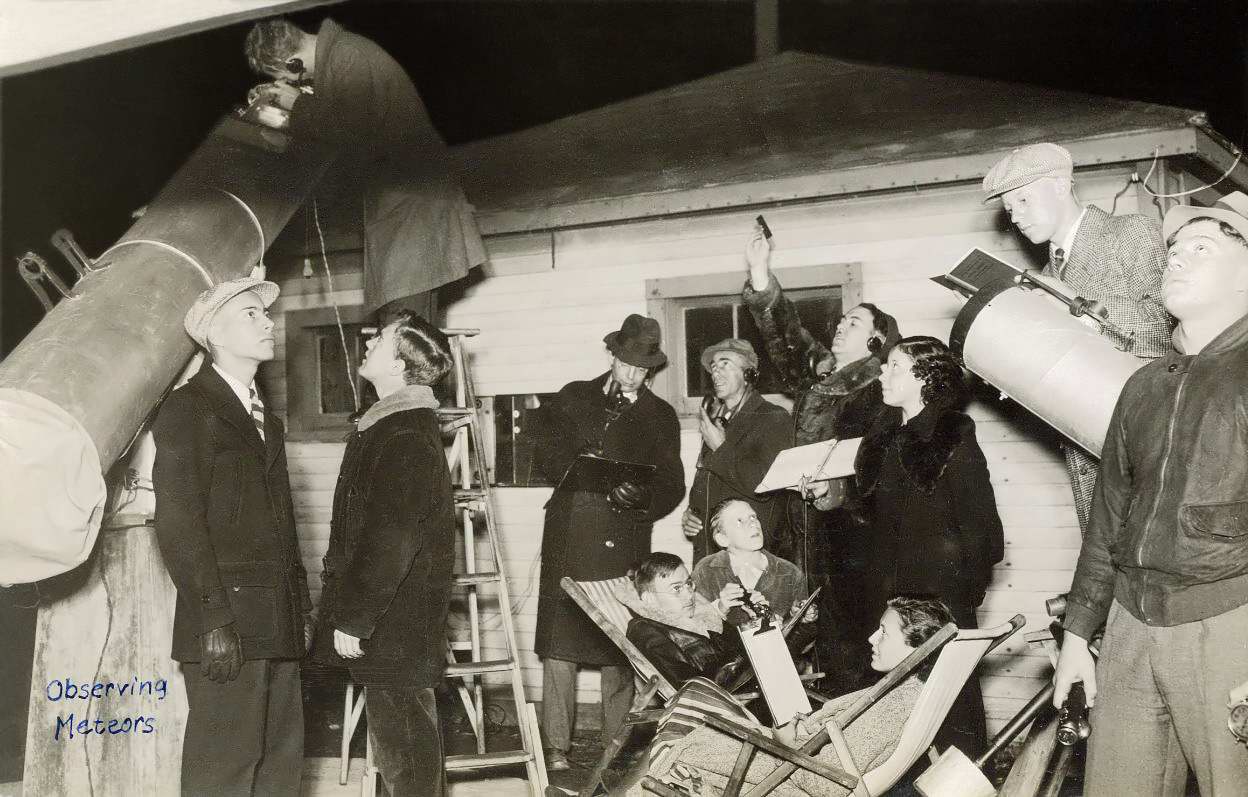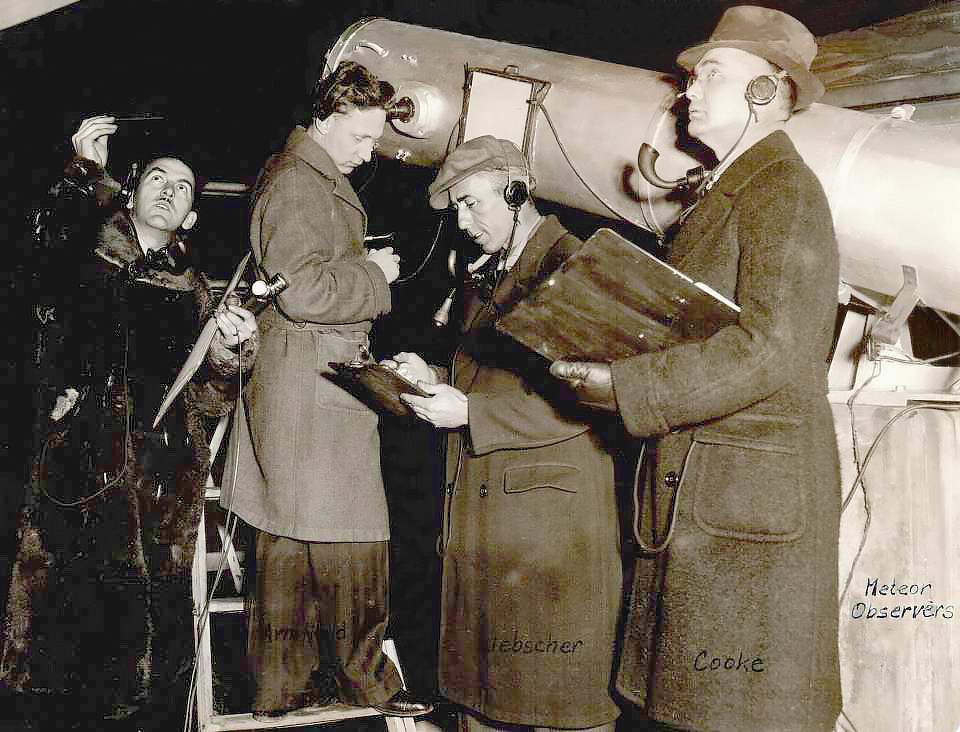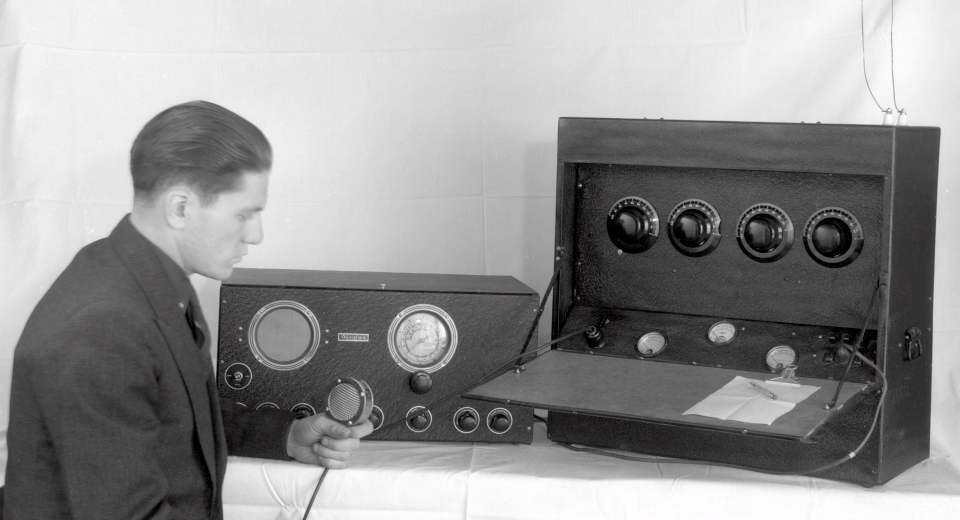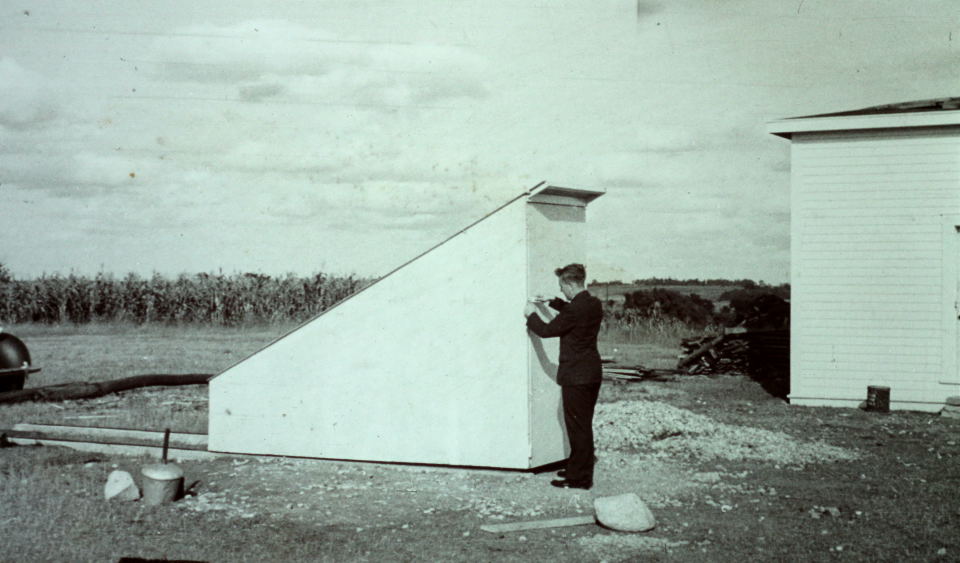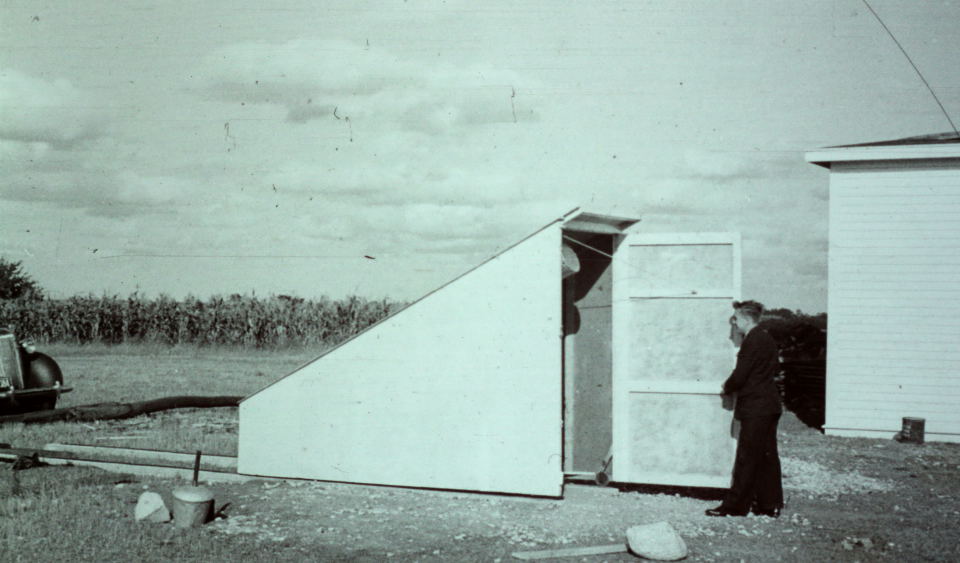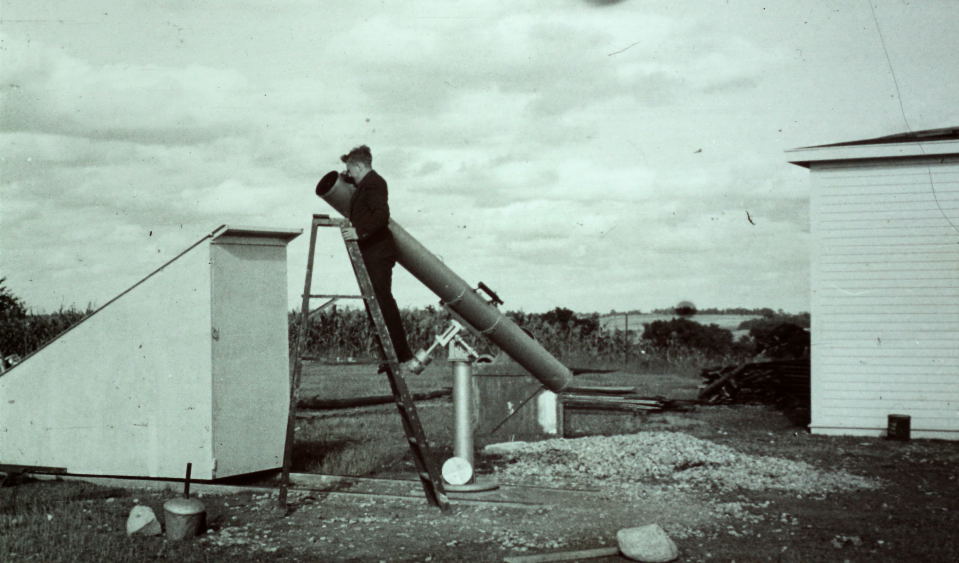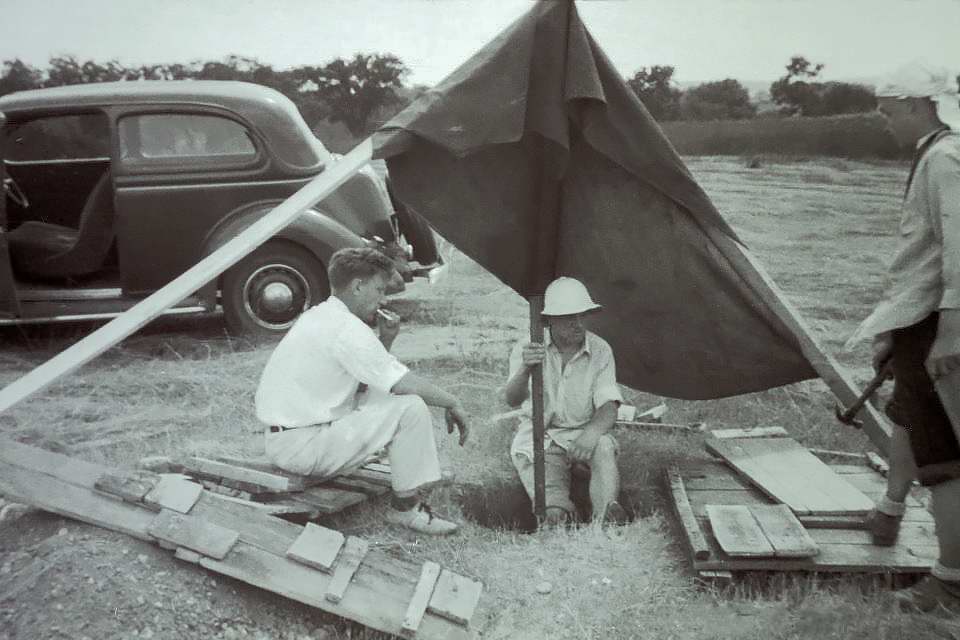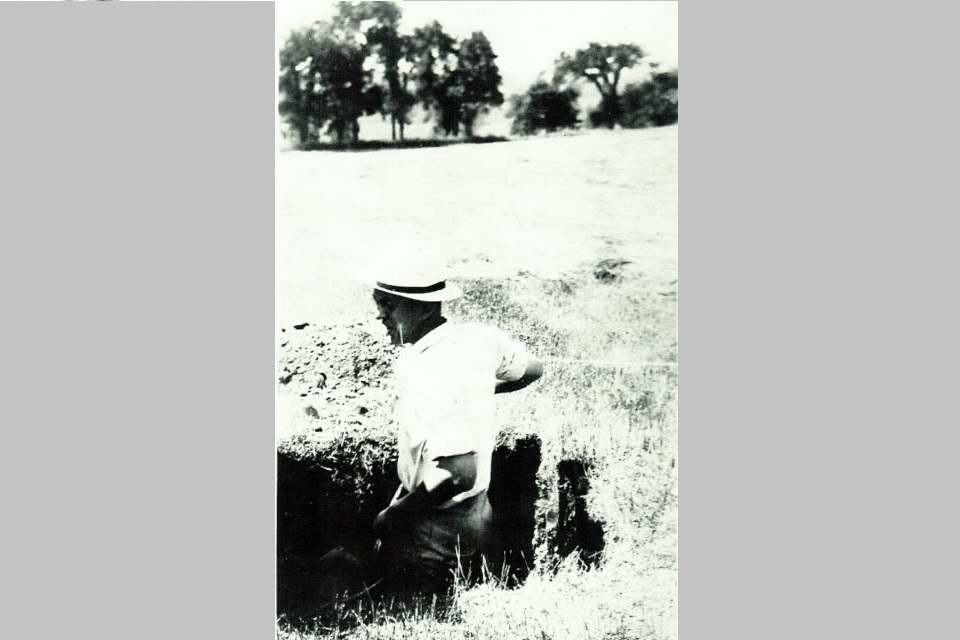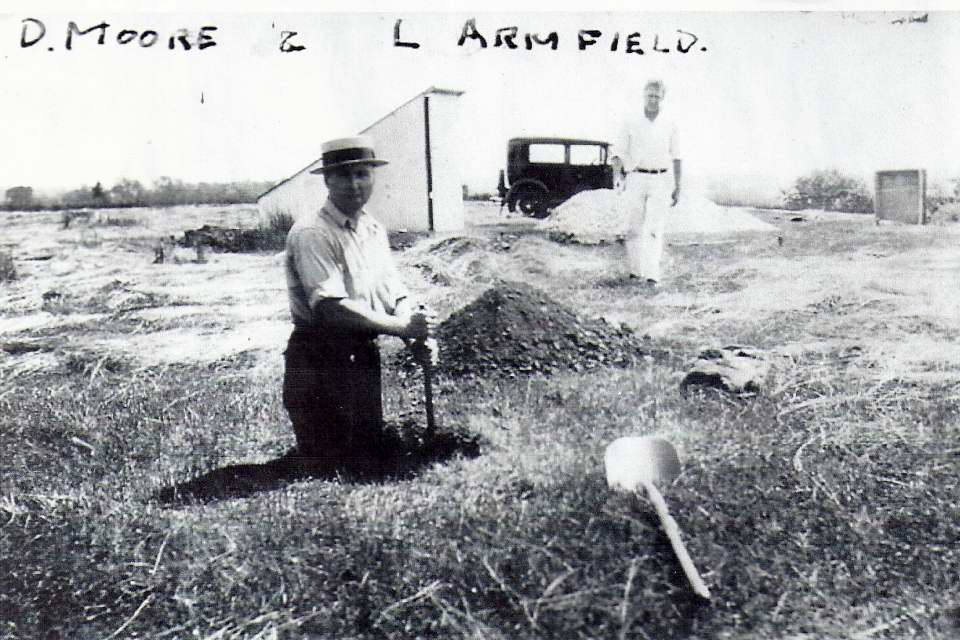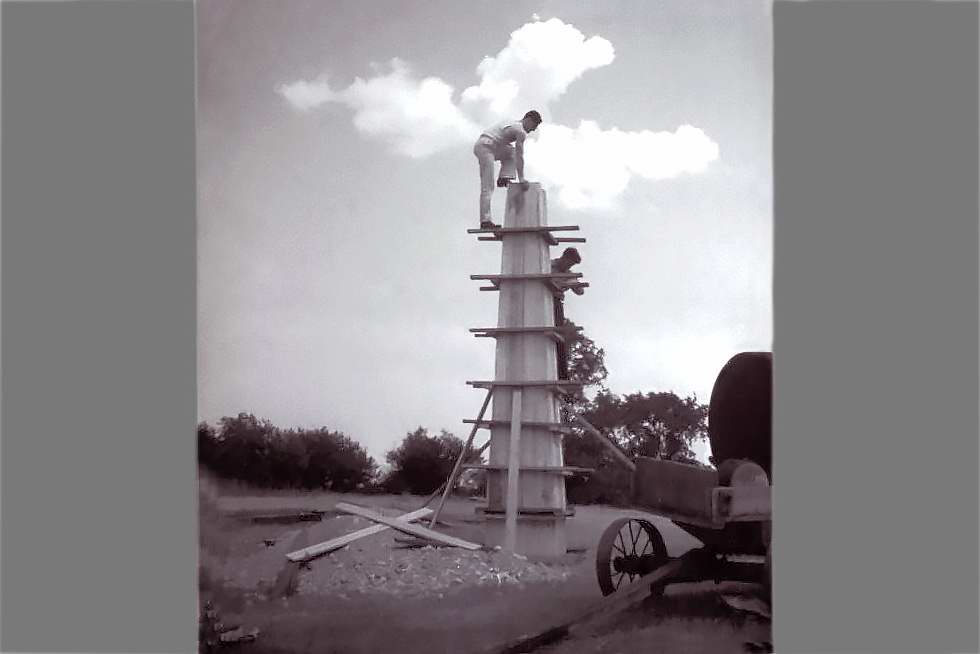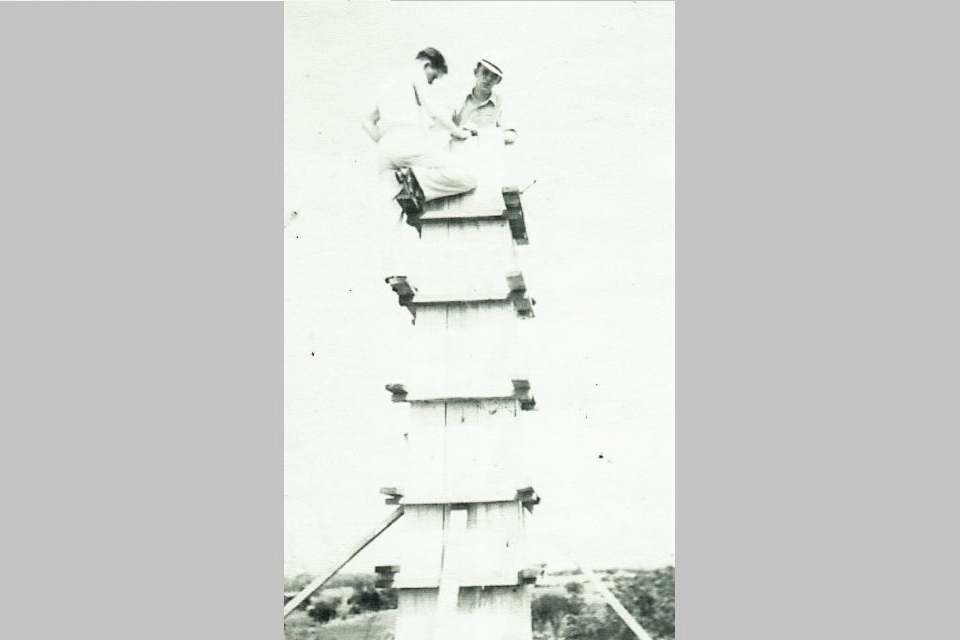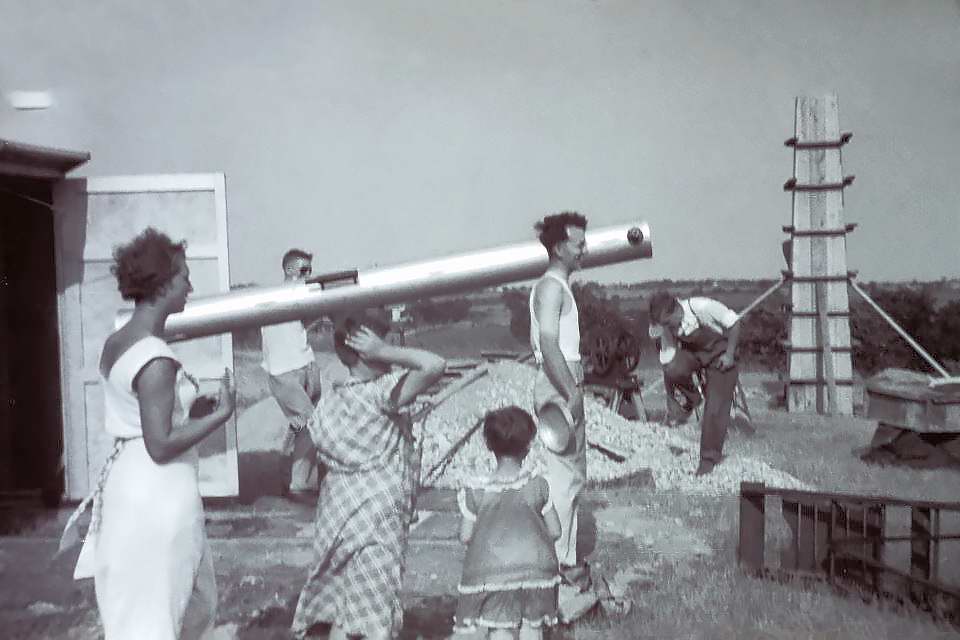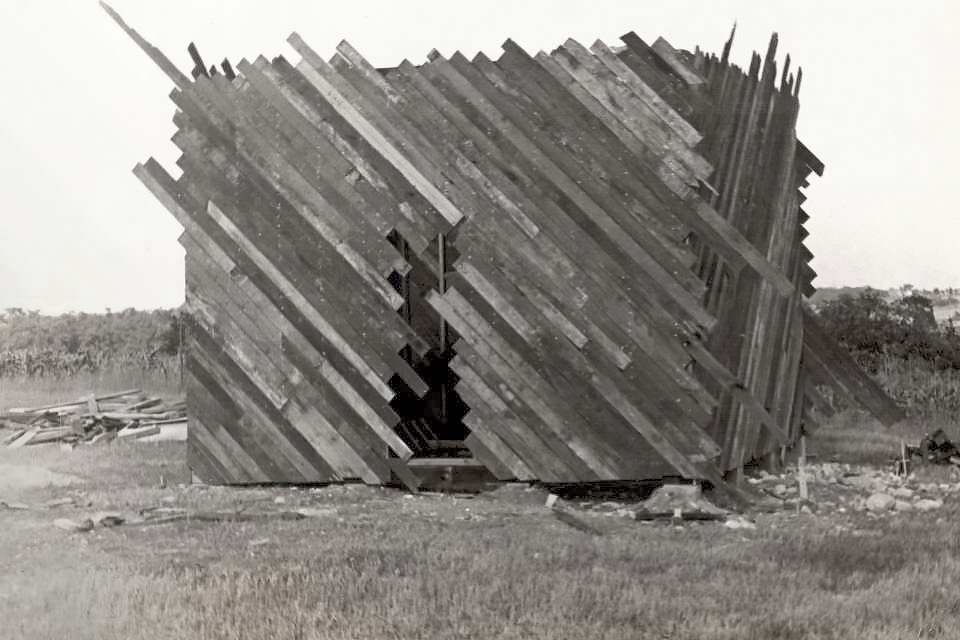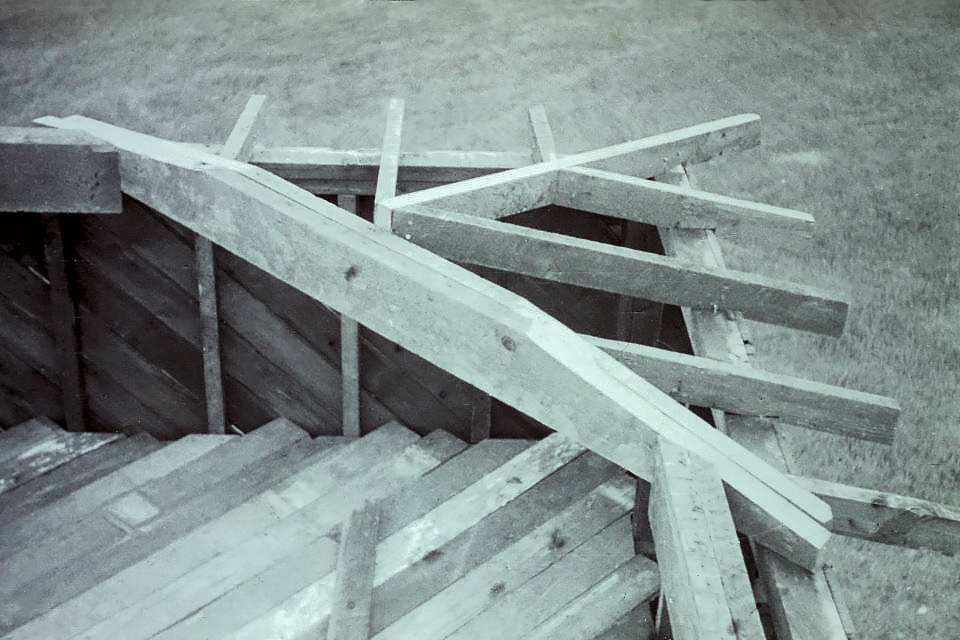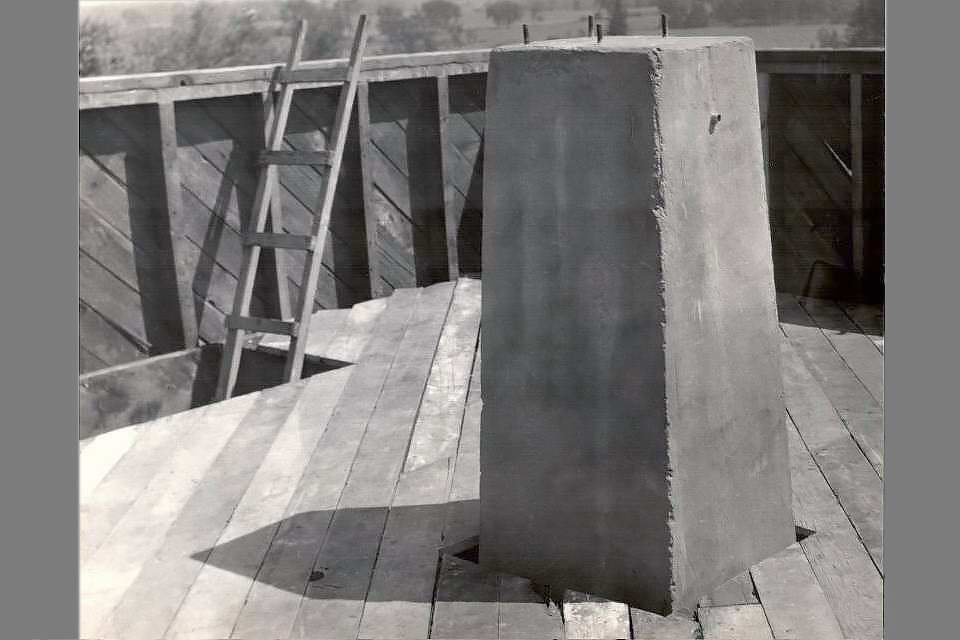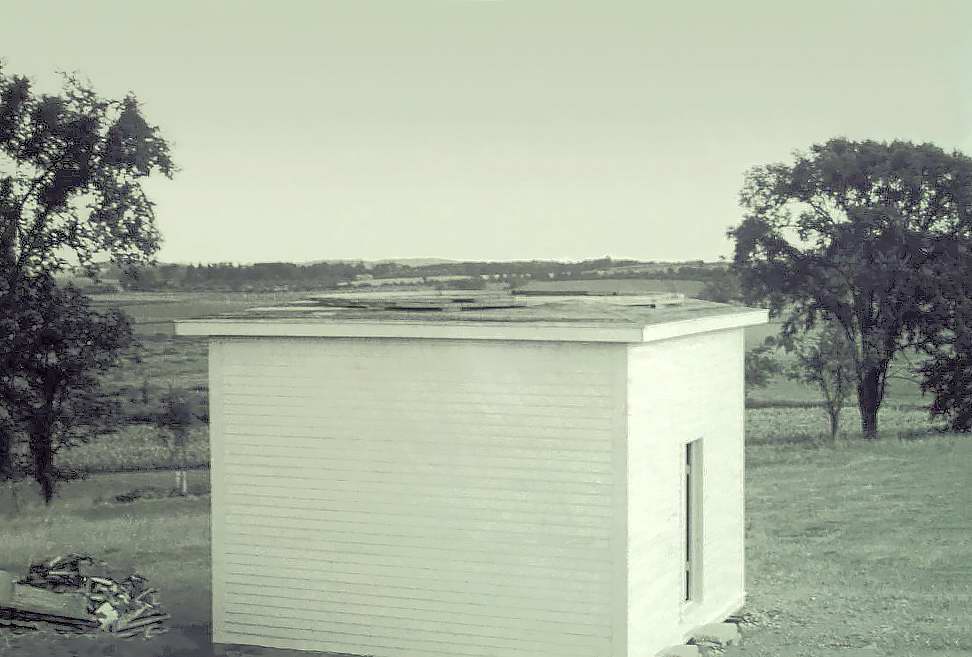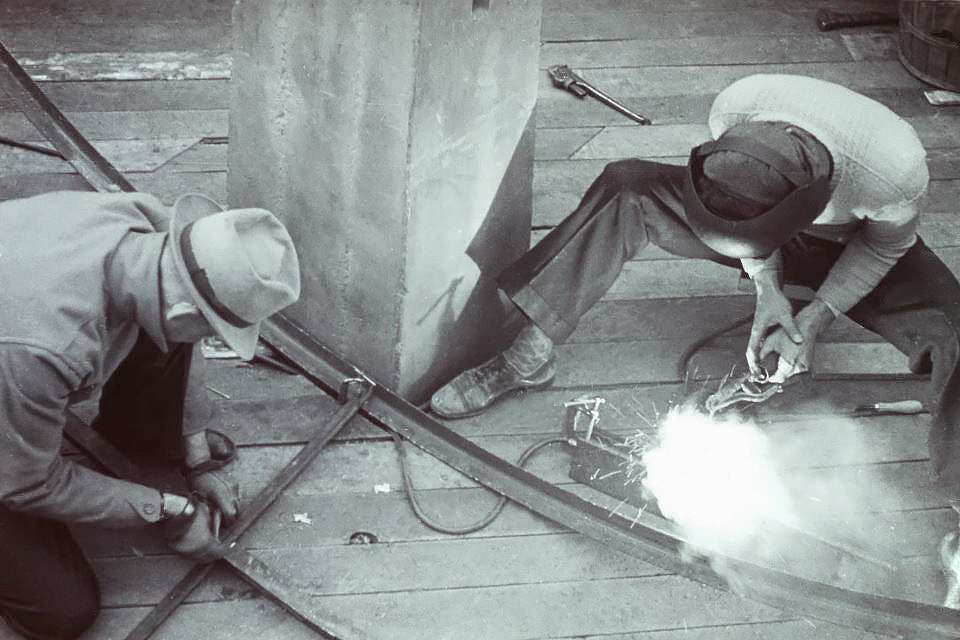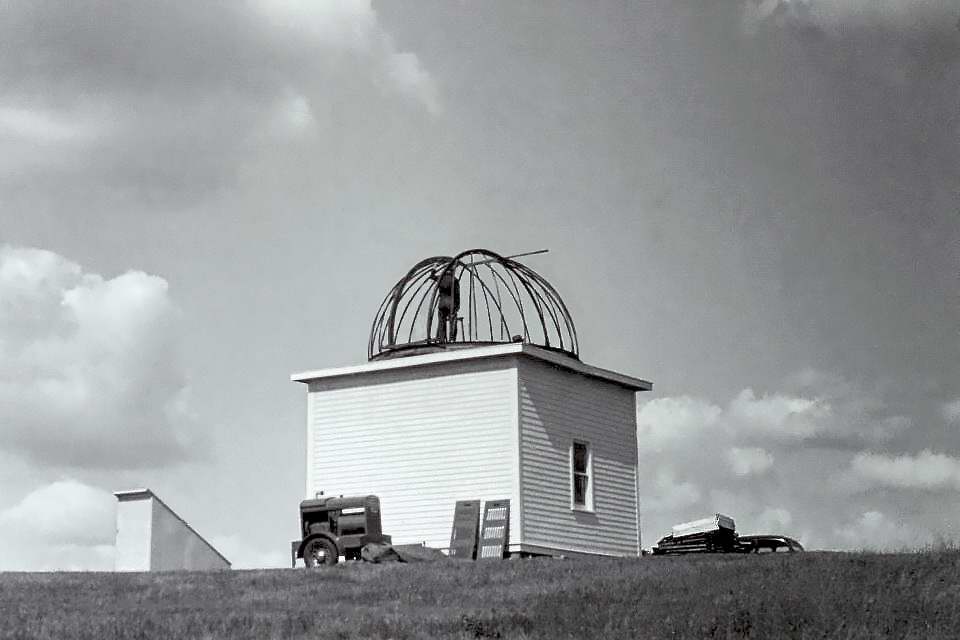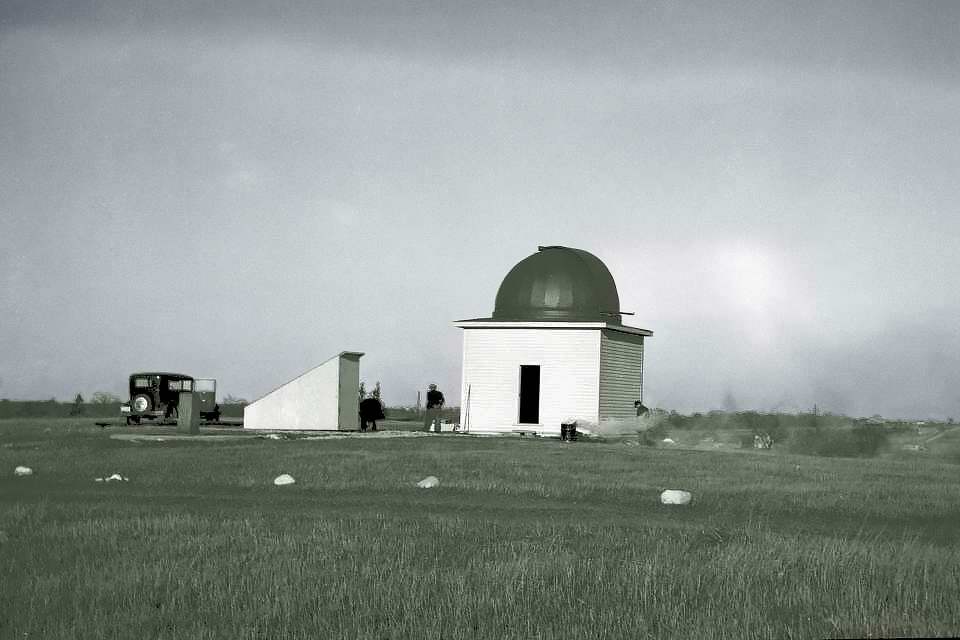Edward A. Halbach
1909-2011
Ed Halbach is arguably the most significant member ever of the Milwaukee Astronomical Society. He joined the club at its start in 1932 and remained active until 1977, but remained a member until his death in 2011, a span of 78 years which is longer than any other member. But far beyond our club, he was one of the most significant amateur astronomers of the twentieth century.
Education / Early Employment
Halbach graduated high school in 1926 and soon after his mother, Eva, moved the family to Milwaukee (his father, John, died in 1923). He then attended Marquette University where he studied electrical engineering, receiving his Bachelor's degree in 1931. He went on to earn a Master of Science degree in physics in 1933, writing a thesis entitled, "Experimental Study of Proposed Amplification Methods of Measuring Small Charges or Discharges of Electricity." At the same time he took courses at Milwaukee State Teacher's College including teaching methodology for mathematics and physics. Thus he was preparing to practice engineering and communicate science subjects as well as engineering.But with the outbreak of the Great Depression, securing employment was difficult. While still in school he was employed half-time in a cooperative program where he wired control panels, developed insulation products, and did commercial photography. After graduation, he found work supported by the Civil Works Administration. He finally found full-time employment as a chemical laboratory assistant at the Rundle Manufacturing Company in 1935. Not what he sought to do, but during the Great Depression you had to take what you could get.
Milwaukee Astronomical Society Formed
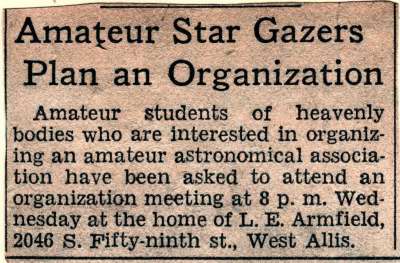 A measure of the Halbach's energy is his story that
late in his education hoping to start an engineering career, he looked for an
activity to occupy his free time. In 1932, Halbach saw an advertisement in the Milwaukee Journal
announcing the formation of an astronomical society. He joined the
following month in October of 1932. Here he would find an activity where he could channel his energy. And the
opportunites for Halbach would be many.
A measure of the Halbach's energy is his story that
late in his education hoping to start an engineering career, he looked for an
activity to occupy his free time. In 1932, Halbach saw an advertisement in the Milwaukee Journal
announcing the formation of an astronomical society. He joined the
following month in October of 1932. Here he would find an activity where he could channel his energy. And the
opportunites for Halbach would be many.
Though the MAS
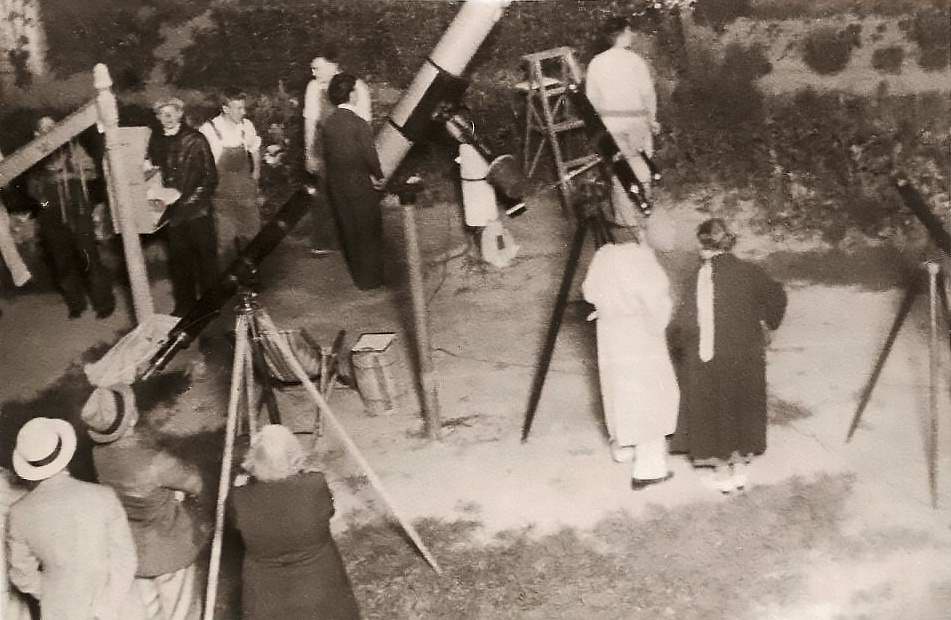 did not have an observatory in those early years (and would not for many years), they did have the backyard of
Luverne Armfield which
was the gathering location for the club whenever there was a clear night. Though far from an idea location and it was
incredibly small, it provided a
place where fellow members could meet each other, share information, and learn about astronomy. Armfield was an early adopter
of "scientific observing" - making celestial observations that can benefit our understanding of the universe. During that
era meteor and variable star observing were the two big areas where amateurs could contribute. And he
enthusiastically trained anyone who expressed an interest.
did not have an observatory in those early years (and would not for many years), they did have the backyard of
Luverne Armfield which
was the gathering location for the club whenever there was a clear night. Though far from an idea location and it was
incredibly small, it provided a
place where fellow members could meet each other, share information, and learn about astronomy. Armfield was an early adopter
of "scientific observing" - making celestial observations that can benefit our understanding of the universe. During that
era meteor and variable star observing were the two big areas where amateurs could contribute. And he
enthusiastically trained anyone who expressed an interest.
Armfield would get a lot of people observing variable stars, but there was no one more enthusiastic than Halbach. He made his first variable star estimates in 1933, joined the AAVSO in 1934, and would observe variable stars for over 70 years. In time Halbach would take over Armfield's mantle of our club doing scientific observing.
With meteor observing being an important amateur area, it is hardly surprising that Halbach dove into that as well. But a lot of members didn't need a lot of coaxing because the annual November Leonid Meteor Shower in 1933 promised to become a meteor storm. Armfield had over a dozen members participate in an observing campaign. Halbach wrote an article about those meteor observations in the March, 1934 issue of the MAS Bulletin.
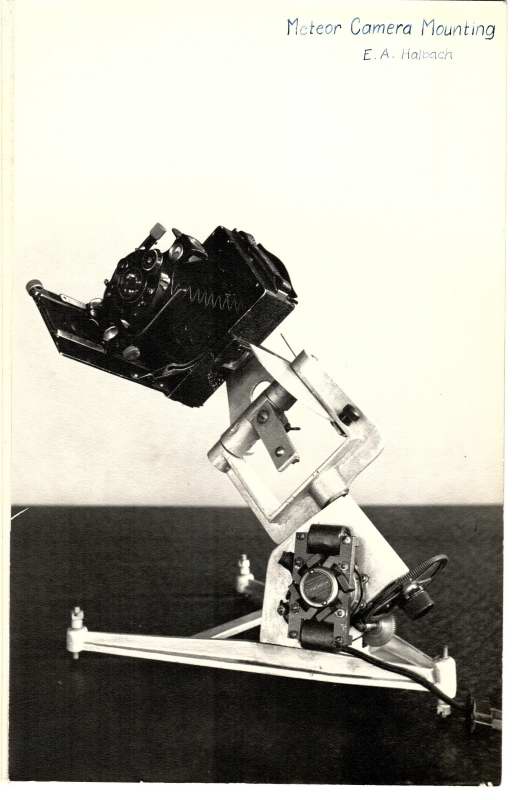 Halbach with his engineering and photography skills would almost immediately enhance these observations by making a camera mount for
photographing meteor trains while another member built a rotating shutter mechanism.
Halbach with his engineering and photography skills would almost immediately enhance these observations by making a camera mount for
photographing meteor trains while another member built a rotating shutter mechanism.
When Armfield became the section leader for the American Meteor Society (AMS), Halbach took over Armfield's position as the MAS Meteor Director.
Another area where amateurs could contribute to science were occultations of stars by the moon so naturally this became an important activity of the club. Again, Halbach would be quick to embrace this activity.
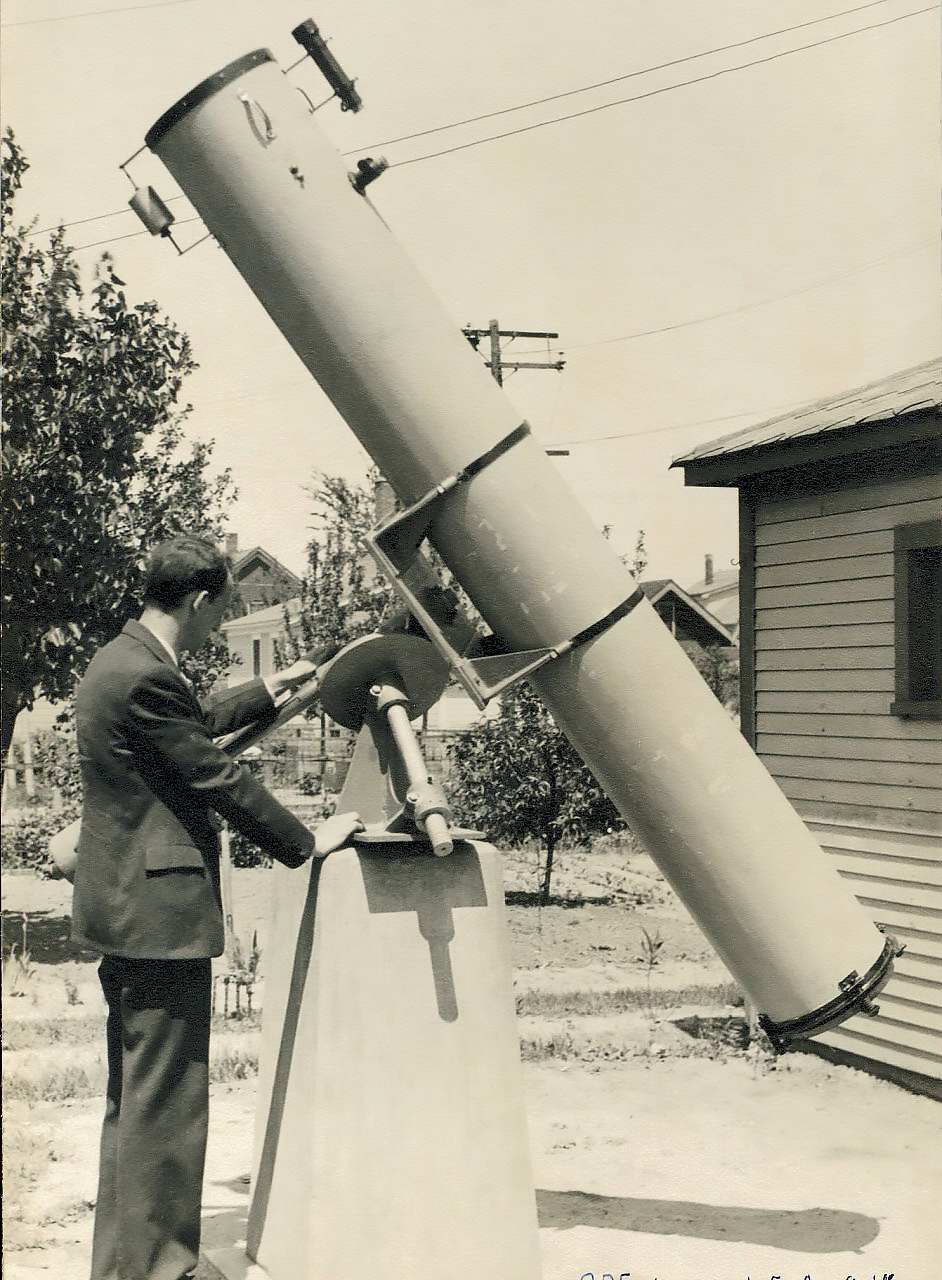 Though astronomy was new to Halbach, engineering was not. Telescope making was an important part of the
new club because not only were commercial telescopes unaffordable, it was also in the middle of the great depression.
Halbach's talents were immediately utilized in this endeavor as he helped many members build their own telescopes. But the telescope making
was never a primary purpose. He viewed it strictly as a means to an end.
Though astronomy was new to Halbach, engineering was not. Telescope making was an important part of the
new club because not only were commercial telescopes unaffordable, it was also in the middle of the great depression.
Halbach's talents were immediately utilized in this endeavor as he helped many members build their own telescopes. But the telescope making
was never a primary purpose. He viewed it strictly as a means to an end.
In February of 1934 Luverne Armfield was offered the use of a 13-inch plate glass mirror from the AAVSO which Armfield, and by extension the MAS, could use as long as they pursued the study of variable stars. The glass itself was not ground at the time of the offer and it was up to the club to specify what was desired. Halbach was part of a 12 member team that would design and build the optical tube and mounting. The telescope when completed was set up in Armfield's backyard so it could be put into immediate use as the MAS did not have a remote observatory. That telescope would eventually be updated and moved to our observatory in New Berlin and is still in operation to this day.
You can read the entire history of this telescope, (now offically designated as the Edward A. Halbach Telescope and unofficially the A-Scope) here.

In 1934 the MAS joined the Milwaukee Hobby Council. Halbach was put in charge of creating the exhibit because of his outreach efforts for the club.
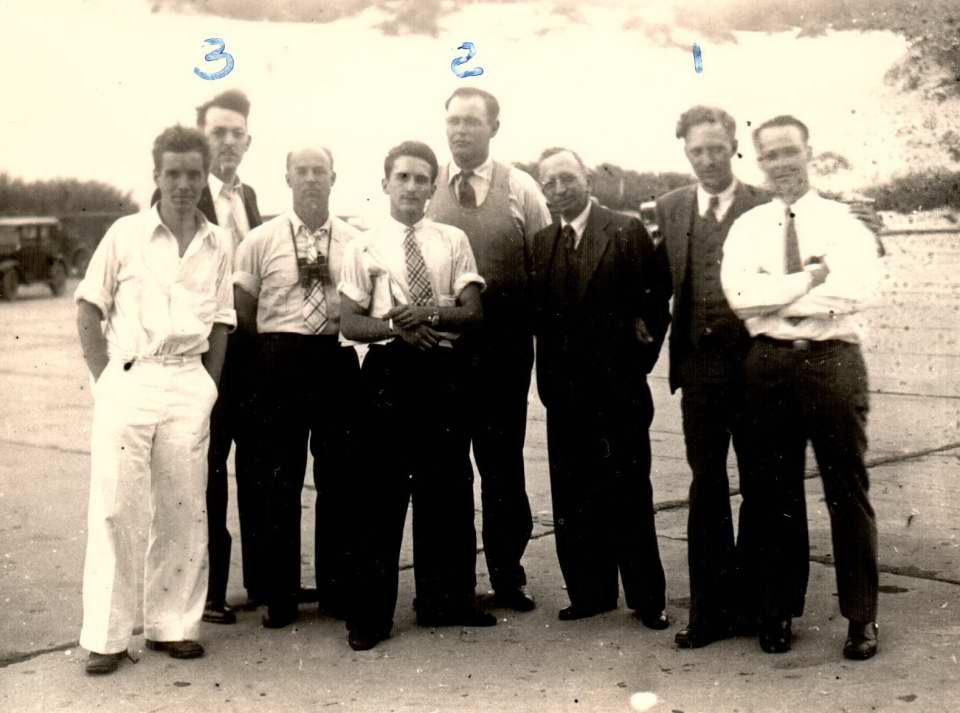
1. Luverne Armfield, 2. Art Peck, 3. Ed Halbach
Though Halbach from the very beginning was extremely active in the MAS, he is not seen in many photographs and especially the group photographs. However, the reason is Halbach was the club's photographer so was normally behind the camera. So he can be considered the first club historian.
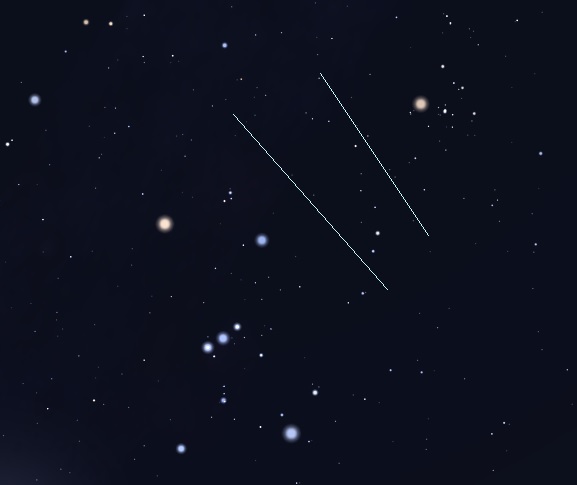 Meteor observing was one important way that amateurs could contribute to science. Doing meteor counts and
establishing radiant points had long been the way amateurs could contribute, and Halbach used his electrical
engineering skills to enhance the field. First by making an equatorial mount for a camera to photograph meteor trails and
a multi-observer recording pen device. But a new program was very promising and exciting. If you could get a good
enough plot for the same meteor seen by two observers 25-125 miles apart, a parallax could be determined
and, hence, a height calculation could be made. This became an important activity of the MAS that Armfield and Halbach led.
Meteor observing was one important way that amateurs could contribute to science. Doing meteor counts and
establishing radiant points had long been the way amateurs could contribute, and Halbach used his electrical
engineering skills to enhance the field. First by making an equatorial mount for a camera to photograph meteor trails and
a multi-observer recording pen device. But a new program was very promising and exciting. If you could get a good
enough plot for the same meteor seen by two observers 25-125 miles apart, a parallax could be determined
and, hence, a height calculation could be made. This became an important activity of the MAS that Armfield and Halbach led.
Halbach's innovation was to coordinate these observing campaigns by using shortwave radio and he built one himself! With observers communicating in real-time, there would be little doubt they had seen the same meteor. However, success would not come easily. A new problem surfaced: finding willing amateur radio enthusiasts. He finally found one in Carroll Frank Oakley who was a Washburn Observatory staff astronomer. Halbach then found a willing partner in Joseph Schmitz to operate his shortwave radio. He reported in Amateur Astronomy that on the night of October 19/20, 1935, he and Oakley made radio contact at midnight and "had the surprise of a lifetime for the first five or six meteors to appear ... were seen simultaneously by both observers ... plotting of meteors was then begun and in 66 minutes, nine duplicate plots were made." Halbach observed, "more duplicate plots were made in one hour than (two observers) ever succeeded in making in a whole night of work" using the traditional non-radio method.
Read Halbach's article on coordinated meteor observations in the AA Journal of November, 1936.
 The difficulty of getting qualified observers in remote locations from Milwaukee was mostly solved with the formation
of the American Amateur Astronomy Association (AAAA).
The difficulty of getting qualified observers in remote locations from Milwaukee was mostly solved with the formation
of the American Amateur Astronomy Association (AAAA).
The AAAA was formed in 1935 as a confederation of amateur astronomy societies and clubs, modeled after the BAA. It was basically a forerunner to the Astronomical League which would not be formed for 11 years later. In January of 1936 they began a monthly publication, Amateur Astronomy, to report on various observing activities and news from the member clubs. Halbach served as one of the editors.
In 1936 Halbach was elected to the position of Treasurer.
In
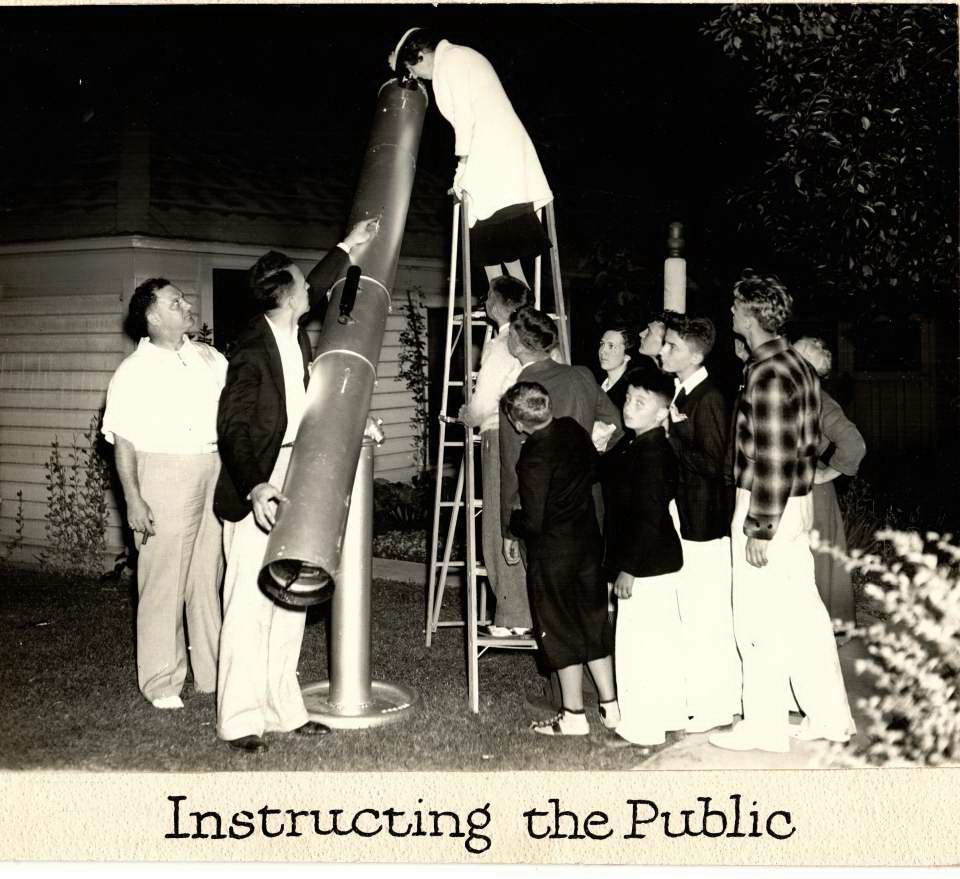
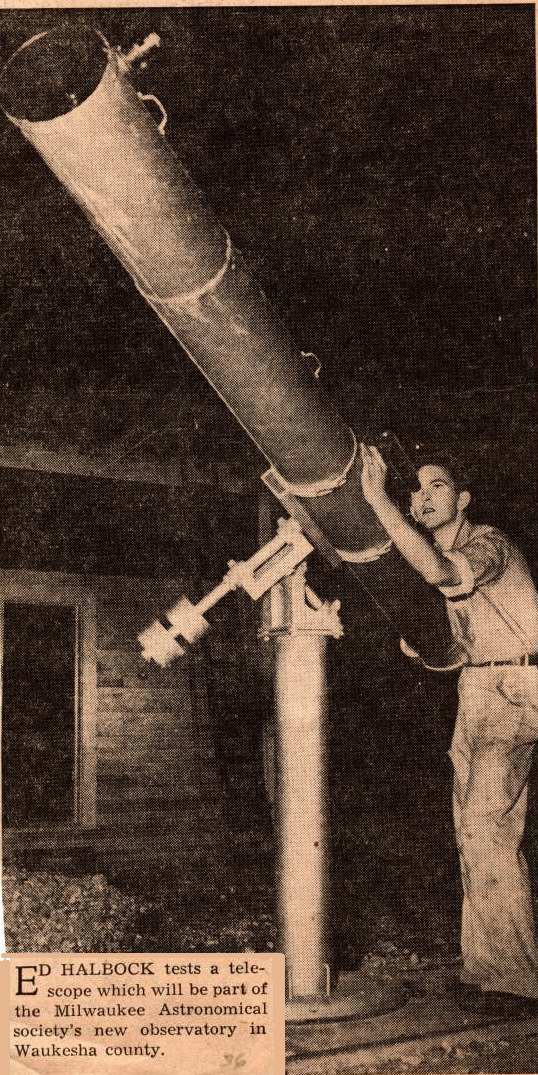 May of 1936, new member, A. C. Tabbatt, who was primarily interested in planetary observation, stated that he
wanted a large telescope for that purpose and would put up the funds necessary for its completion. It was decided that
it would be an 8-inch, f/15 reflector! The mount was designed and built by Halbach who also worked on the roll-off structure
that housed it. The following year Tabbatt would allow the club to move both the telescope and roll-off structure and would become the
first observatory on the grounds of the New Berlin location.
May of 1936, new member, A. C. Tabbatt, who was primarily interested in planetary observation, stated that he
wanted a large telescope for that purpose and would put up the funds necessary for its completion. It was decided that
it would be an 8-inch, f/15 reflector! The mount was designed and built by Halbach who also worked on the roll-off structure
that housed it. The following year Tabbatt would allow the club to move both the telescope and roll-off structure and would become the
first observatory on the grounds of the New Berlin location.
Also sometime during the summer of 1936 it was finally decided that the site that member Matthew Phillips offered should be developed, regardless of the difficulty, especially the financial aspect, utilizing the time and skill of members of the MAS and Halbach would play a key role in this project. It was hoped that they could complete a domed observatory to house the 13-inch telescope by winter, but all that could be completed was the surveying for the location of the two piers.
The impetus for this was not generally known to the membership, but Armfield was in the process of getting a divorce and knew he would have to vacate his home in West Allis that had served as the MAS Observatory. In October he vacated and with that was the loss of the 13-inch reflector. But sad as this was, the upside was that they now had time to work on the telescope and give it a variety of upgrades including setting circles, a clock drive, a proper mirror cell, and an enhanced drive system which would allow for limited slewing in both declination and right ascension. Halbach, again, was a key member in this effort that occurred in the winter of 36-37.
In late 1936, the AAVSO recognized Halbach's observing skills and use of public education activities by naming him Regional Advisor for Wisconsin whose role was to train amateur astronomers to monitor variable stars.
On February 1, 1937, Halbach became a mathematics instructor at Marquette's College of Engineering. Later that year his title changed to Instructor of Electrical Engineering.
Development of the observatory itself began in 1937 with a slight detour in plans. After A.C. Tabbott allowed his telescope and shed to be moved it was decided that they would erect that structure and telescope first. Later, Tabbott would donate everything to the MAS. Construction began on July 1st and was completed by the 5th.
When the 8" telescope and shelter were complete, ground was broken for the domed observatory by the digging of a hole six feet deep to receive the form for the pier. The construction would last through the late fall until the dome was complete.
This was all happening during the Great Depression and there was little money available. At one meeting, however, they passed a hat and managed to collect $100 to purchase some used lumber. One of Halbach's many talents was the ability to obtain donated material for observatory projects and is quoted as saying, "You need to know how to scrounge". Steel for the dome were obtained this way. Concrete for the piers and footings was obtained by striking a deal that the concrete company would donate it in exchange for the opportunity to look through the telescope.
We believe all of the following photographs of the A-Dome construction project were by Halbach unless he appears in the photo.
With the completed exterior completed (especially the dome), work was mostly suspended during the winter of 37-38.
In the middle of all the construction in 1937, Ed Halbach became the President of the MAS, a position he would hold until 1940.

